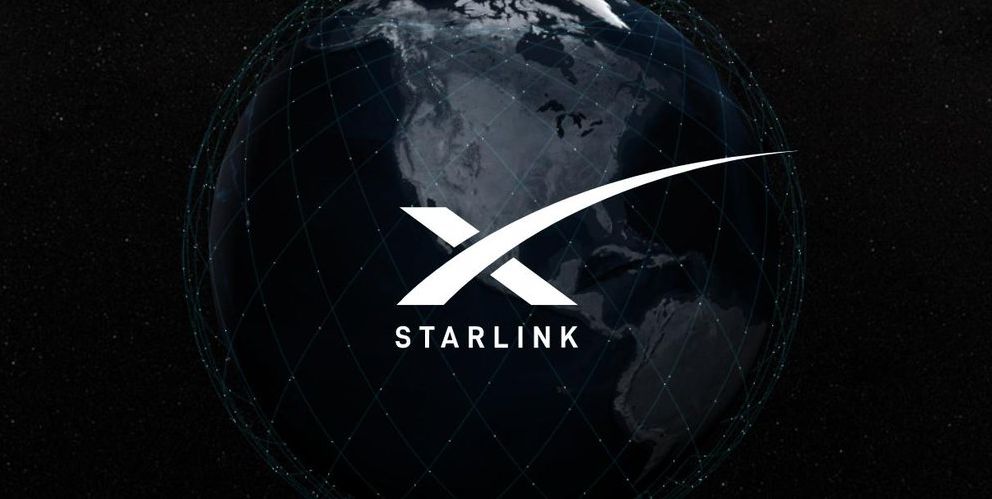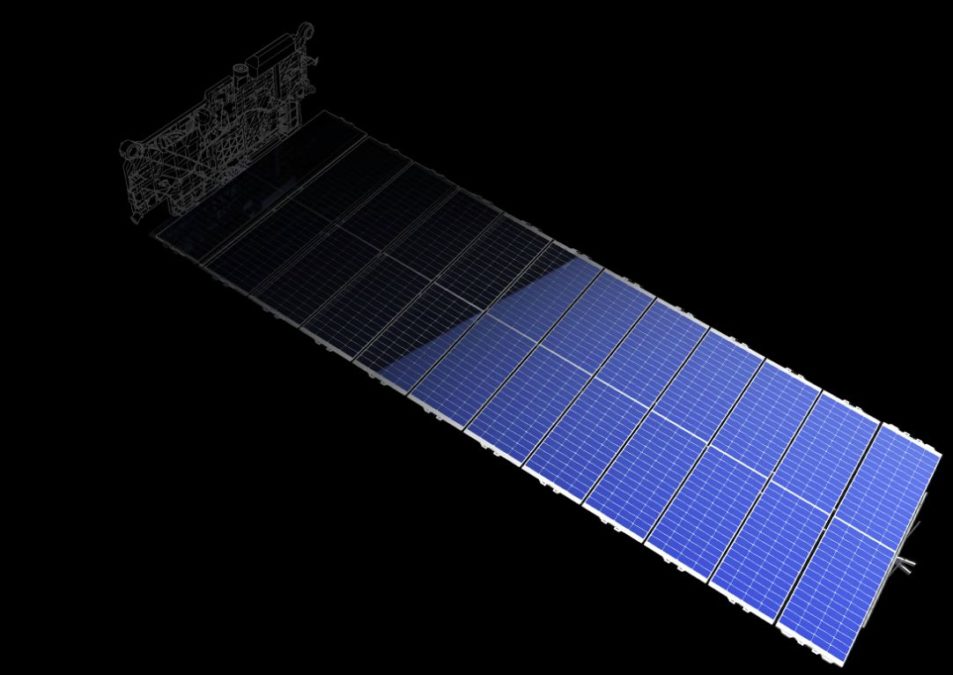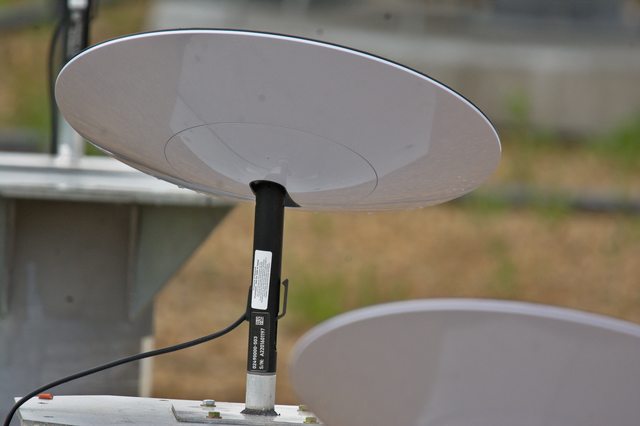
The dream of being able to access the internet, no matter where you live might become a reality sooner than you might think. In 2015, SpaceX, the company owned by technology billionaire Elon Musk, announced it was developing such a service called Starlink. But what is Starlink, exactly? Keep reading as we reveal more about this upcoming, and highly ambitious, space internet service.
Read: Try SpaceX’s docking simulator
How does Starlink work?
Once it becomes fully operational, Starlink will be able to offer internet access from virtually anywhere on the planet. The goal of the Elon Musk Starlink effort is to launch thousands of small satellites, all of which will be in low Earth orbit. They will be able to transmit fast internet signals down to Earth.
What are the satellites like?

Each satellite in this Elon Musk Starlink project weighs just 573 pounds (260kg). They are basically very flat and then when 60 of them are placed inside one of SpaceX’s Falcon 9 rockets. When they are put in orbit, a single large solar array comes out to power the satellite. The main portion includes four powerful antennas for internet transmissions. They also have lasers that connect each satellite with four others in orbit. Finally, they include ion thrusters that use krypton gas. This allows them to stay in orbit longer even at these lower distances from Earth.
How fast will Starlink internet speeds be like?
The SpaceX Starlink satellites will be in low orbit, around 350 miles above the Earth. Because of that relatively short distance, SpaceX claims the latency should be between 25ms and 35ms. That should be fast enough for most internet tasks, including gaming. Download speeds should also be pretty quick, at about 1Gbps. SpaceX has yet to confirm what upload speeds will be like.
Read: Best internet providers
By comparison, the current HughesNet satellite internet service offers download speeds of up to 25Mbps. However, its latency speeds are much slower at about 600ms.
How many satellites have been launched so far?

The company launched its first test satellites in 2018. This was followed by the first official 60 satellites for the service in 2019. As of this writing, SpaceX has put up about 540 of the satellites into orbit. It plans to put as many as 120 more satellites into orbit with two more launches in July. One will take place on July 8, while the other is scheduled to occur sometime in late July.
How many satellites will be needed for the service?
The company has received permission from the US Federal Communications Commission (FCC) to put as many as 12,000 SpaceX Starlink satellites above the planet. Basically, it will form a kind of “Starlink constellation” in the sky. SpaceX would like to put even more satellites above the Earth. Ultimately, the “Starlink constellation” could have as many as 42,000 satellites in orbit.
How much will Starlink internet access cost?
So far, SpaceX has yet to confirm pricing plans for the service. In a CNN article, the company’s President and COO Gwynne Shotwell gave a hint about pricing, saying, “Is anybody paying less than 80 bucks a month for crappy service? Nope. That’s why we’re gonna be successful.” By comparison, the HughesNet service costs as much as $150 a month, with a 50GB high-speed data plan (at 25Mbps) and horrible latency that makes gaming impossible and even tasks like streaming can be quite the chore.
When will Starlink internet be available?
Musk claimed in a Twitter post in April that a private beta will begin around three months from that point. If the company is still on target for that date, the private beta could begin as soon as late July. He added that a public beta would begin in about six months. That puts the public beta around October or so. The official launch is scheduled to happen sometime in 2021.
Where will SpaceX Starlink internet first be available on Earth?
Musk stated the private beta would first be available for people in “high latitudes”. The company has clarified that the beta would launch first for residents in Canada, along with the northern portions of the United States. The plan is to expand to other parts of the world in 2021.
Other Frequently Asked Questions
Q: Can SpaceX Starlink satellites be seen from Earth?
A: When SpaceX first launches a new set of satellites, They can be seen soon afterward with the naked eye in many locations. However, they soon go higher up into orbit. When that happens they become much less visible but in certain circumstances, they could still be visible with the naked eye, and certainly via telescopes.
Q: Why are Starlink satellites so bright?
A: The reason is mostly that they are orbiting much lower than normal communication satellites. According to a Vox article, many astronomers have concerns that the plan to put as many as 12,000 or more Starlink satellites into orbit could cause a lot more light pollution, That could interfere with their Earth-bound telescopes. SpaceX says it is working to reduce the amount of light pollution from those satellites, including experimenting with a dark coating on the surface.
Q: Are Starlink satellites dangerous?
A: There have been some concerns raised about the amount of space debris that could be generated with thousands of Starlink satellites in orbit. According to this SpaceNews.com article, many experts feel they could cause issues with both unmanned and manned spacecraft. SpaceX claims that any issues with failing satellites will be resolved by simply using their onboard thrusters to safely take them out of orbit and have them burn up in Earth’s atmosphere?
Q: Will Starlink internet be faster than fiber?
A: Fiber internet speeds top out at 10Gbps. Starlink’s download speeds are supposed to be up to 1Gbps, but again there’s no word on upload speeds. Therefore, it doesn’t look like Starlink will be faster than fiber?
Read: What is the Internet of Things?

Q: Will Starlink work with cell phones?
A: No. It is designed to offer fixed internet services to a home or business. The Reddit user Darkpenguin22 recently posted up images of what he claims was a prototype Starlink tracker terminal in Wisconsin. The small circular Starlink tracker antenna has been called by some people a “UFO on a stick”. Having said that, smartphones could connect to a Starlink data connection and its home network via its WiFi hardware.
Read: What is fixed internet?
Q: Will Starlink use 5G?
A: No. As we have stated before, the service is designed for direct fixed connections to homes or businesses. It is not the same as mobile 5G technology.
Read: What is 5G?
That’s a look at the upcoming Starlink SpaceX service. Will you be using this space internet service?
 Loading poll
Loading poll
No comments:
Post a Comment